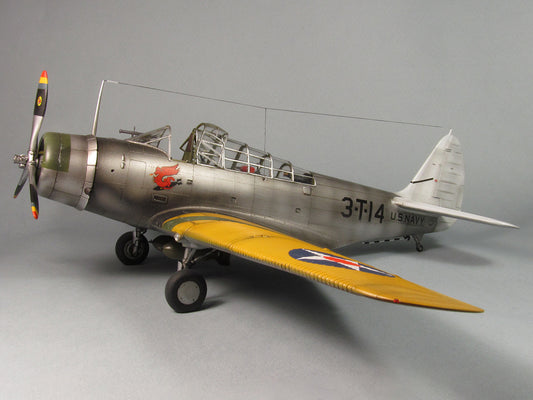By Oleksandr Prykhodko, Ukraine
ICM, 1/48
I-16: The Iconic Soviet Fighter of World War II
The Polikarpov I-16 stands as arguably the most emblematic and memorable Soviet fighter of the Second World War. It represents the world's first mass-produced monoplane fighter with retractable landing gear. Before the war, it became the most produced fighter globally, with around six thousand I-16s manufactured by the start of World War II.
About the Prototype
The I-16 featured predominantly wooden construction, with plywood and fabric covering. It served as the main fighter for the Soviet Air Force (VVS) from 1936 until early 1942. I-16 fighters were also supplied to other Soviet-allied countries. Its combat debut was in the skies of Spain in 1936 during the Spanish Civil War, where the Soviet Union supplied hundreds of I-15s and I-16s to Republican forces.
In 1937, I-16s of the Chinese Air Force faced Japanese Mitsubishi A5M and Nakajima Ki-27 fighters. In 1938, during the Battle of Lake Khasan, Soviet I-16s escorted heavy TB-3 bombers. The Winter War with Finland in 1939-1940 saw I-16s in action against Finnish Fokker D.XXI aircraft, proving to be formidable opponents.
In June 1941, I-16s were among the first Soviet aircraft to engage the Luftwaffe. Despite being technically outdated, they remained a threat in the hands of skilled Soviet pilots.
About the Model
The I-16 model by ICM in 1/48 scale, released in 2017, represents a relatively recent addition to the scale modeling world. It's a highly detailed model belonging to a new generation of ICM kits developed using 3D modeling. Unlike earlier models crafted by hand, these new kits utilize 3D models for production.

The model closely resembles the historical prototype, making the building process enjoyable. For a detailed look at the kit contents, check this link.
Building the Polikarpov I-16 Model
Opting for minimal modifications, I started with the pilot's cockpit interior, which is rich in detail. Unfortunately, no photos of the construction process were retained, but the cockpit interior was painted A-14 Steel Gray, the standard color for Soviet aircraft of that era.
After assembling the cockpit, I worked on the airframe, involving minimal modifications. Gaps were filled, and panel lines were restored. Later, after painting, casting seams became apparent, but I noticed them too late to address.
Moving to the painting phase, at that time, Arcus had only late-war colors. Despite this historical inaccuracy, these colors reasonably represented Soviet aircraft of the 1940s. The lower surfaces were painted with lightened AMT-7 (note: A II Light Blue, which iscurrently available in the Arcus range, is the original color for I-16 lower surfaces of that period), while the upper surfaces received the corresponding AMT-4 Green (note: A II Protective which is also available now is the recommended original color for I-16 upper surfaces in 1937- early 1941).
After painting the main camouflage colors, the model received a gloss varnish, and decals were applied to depict the chosen variant, "White 6" with an arrow on the tail - I-16 type 28, 45th Aviation Division, Southern Front, Odessa area, Late June 1941. Minimal weathering and wash on panel lines were added.
Notably, the metal strap on the engine cowl was made of aluminum foil, and the propeller blades were painted with bright aluminum paint. The rear surfaces of the propeller blades were painted black so as not to blind the pilots in sunshine.
In conclusion, the model was coated with a matte finish, finding its place in the collection. The I-16 model build was swift, given its minimal modifications, and brought considerable joy throughout the process.
Thanks, everyone!
Oleksandr.
(Edited and Translated by Mykhailo Orlov)






















